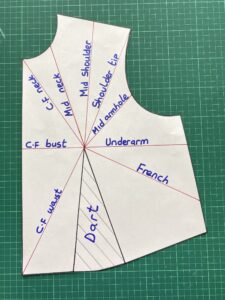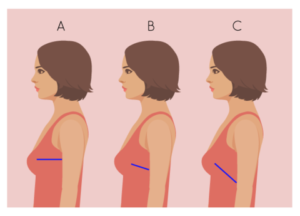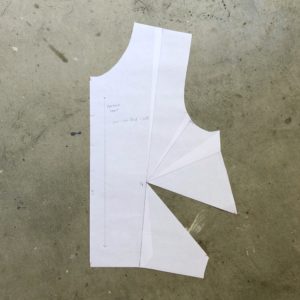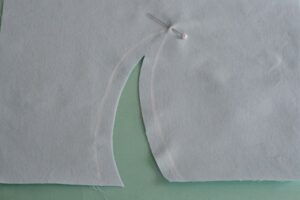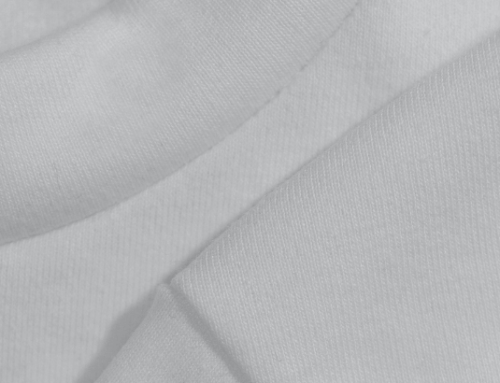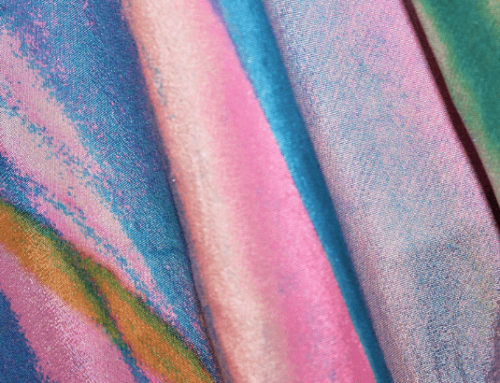As part of an ongoing series of articles about style and design, this month we aim the spotlight on darts, those pizza-shaped tucks and folds we find on our blouses and blazers.
Every female body is unique, with curves, crevices, and corners that are individual to each of us. Our favorite clothes compliment the parts we love, and downplay the ones we’re not as fond of. Clothing designers use an array of ticks to help us achieve our desired look; one popular way to achieve a fitted appearance is the use of darts.
Darts flatter the body by smoothing and shaping otherwise straight, flat fabric around the bust, butt, and hips. When desired, they may also add fullness. They are typically used in woven fabrics as knits are stretchy and more accommodating by nature. The anatomy of the dart can be broken down into two basic components: the point, also called the apex, and the legs, which start at the widest part of the dart. The two legs are stitched together at the apex to create a fold in the straight fabric.
There are many kinds of darts, but in this article we’ll cover the ones we see often, as well as those considered to be the most useful in making made-to-measure made to suit you!
Plain Darts
A plain dart is the most common type of dart, found around the hips and waists of trousers and skirts. These darts can be used pretty much anywhere you want to accentuate, smooth, or elongate the shape. Designers also manipulate plain darts to create different design elements like pleats, gathers, and princess seams.
Bust Darts: These darts are used in tops, jackets, and the bodice area of dresses. They create a fitted appearance by preventing fabric from bunching under the breasts.
Neck Darts: These feminine darts are wide at the neckline, while the slim legs point down toward the bust. A properly placed neck dart is especially flattering on women with larger busts as they pull the gaze upward toward the face and add lift and room to the bustline.
Elbow Darts: These darts are used to create the fitted sleeves we love in tailored jackets.
Shoulder Darts: This dart is located at the shoulder, and is found almost exclusively in women’s clothing as it adds a feminine touch. For a more masculine cut, like blazers with a boxy shape, these darts are absent.
French Darts: A French dart is a diagonal dart that starts at the lower side seam near the waistline and opens up toward the bust. It is a longer, slimmer dart that travels the length of the torso, effectively combining a waist and bust dart.
Double Pointed Darts: Also known as fisheye darts, these darts give shape to dresses with simple lines. Two plain darts are gathered and stitched together at the center of the dress, on either the front or back or both. These darts travel from the bust to the hip, smoothing the fabric for a more fitted look.
Curved Darts: Unlike other darts, this dart looks nothing like a slice of pizza. A curved dart is stitched to be either convex or concave to give room and lift by shaping the bust area of jackets and dresses.
Darts give character to our clothing – they provide dimension to otherwise flat, straight garments. Custom clothing designers manipulate the length and position of darts to shape individual curves and achieve a tailored appearance.
Have you ever counted the darts on your favorite article of clothing?
Sources

